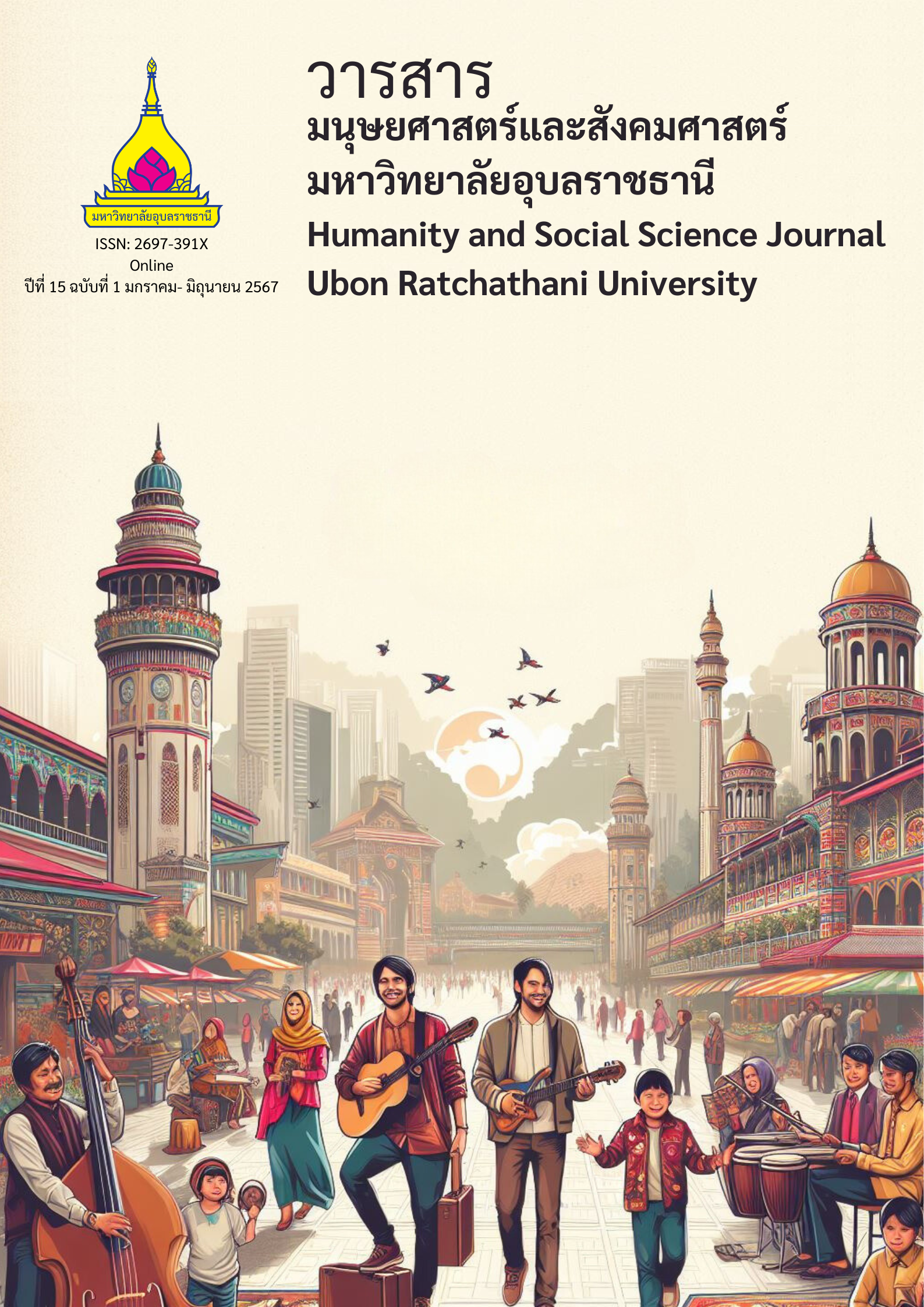เมืองยืดหยุ่น: การยกระดับย่านเมืองเก่าผ่านการมีส่วนร่วมภายใต้กรอบมุมมองทางการท่องเที่ยว
Main Article Content
บทคัดย่อ
บทความนี้ ศึกษาการยกระดับย่านเมืองเก่าผ่านการมีส่วนร่วมภายใต้เมืองยืดหยุ่นสู่กรอบมุมมองการพัฒนาทางการท่องเที่ยว อาศัยการวิเคราะห์ข้อมูลจากงานเอกสาร งานวิจัย บทความวิชาการ บทความวิจัย และกรณีศึกษา พบงานศึกษาประเด็นดังนี้ ประเด็นแรกการจัดการอนุรักษ์เมืองเก่าแบ่งเป็น
ยุครื้อฟื้น เน้นประสบการณ์ในอดีตนำมาต่อยอด ยุคเปลี่ยนแปลง เริ่มมีการอนุรักษ์ควบคู่กับการประสานความร่วมมือจากหน่วยงาน ยุคยกระดับ พัฒนากิจกรรมและนำเข้าฐานเทคโนโลยี ประเด็นที่สองได้นำเสนอแนวคิด ตั้ง: ต่อ: เติม โดยการใช้ “ทุน” ของพื้นที่มาเป็นกรอบพัฒนาย่านเมืองเก่า โดยเน้นการปฏิบัติการชุมชน (Social Lab) ของทุกภาคส่วน ประเด็นที่สามกรอบคิดในการปรับรับต่อสภาวะการหันเหปรับเมืองเก่าเป็นเมืองยืดหยุ่นภายใต้สภาวะความผันผวนเพื่อเป็นการ
ลดความเสี่ยง การธำรงวัฒนธรรมท้องถิ่นต่อบุคคลรุ่นหลังไปสู่การพัฒนา
ให้มีคุณภาพชีวิต (Quality of life) บนวิถีสภาพแวดล้อมสรรค์สร้างทางวัฒนธรรม ความใหม่และความเก่าอยู่ร่วมกันเพื่อสอดรับกับกลไกการเปลี่ยนแปลง
ทางการท่องเที่ยวต่อไป
Article Details

อนุญาตภายใต้เงื่อนไข Creative Commons Attribution-NonCommercial-NoDerivatives 4.0 International License.
บทความที่ได้รับการตีพิมพ์เป็นลิขสิทธิ์ของวารสารมนุษยศาสตร์และสังคมศาสตร์ มหาวิทยาลัยอุบลราชธานี
ข้อความที่ปรากฏในบทความแต่ละเรื่องในวารสารวิชาการเล่มนี้เป็นความคิดเห็นส่วนตัวของผู้เขียนแต่ละท่านไม่เกี่ยวข้องกับมหาวิทยาลัยอุบลราชธานี และคณาจารย์ท่านอื่นๆในมหาวิทยาลัยฯ แต่อย่างใด ความรับผิดชอบองค์ประกอบทั้งหมดของบทความแต่ละเรื่องเป็นของผู้เขียนแต่ละท่าน หากมีความผิดพลาดใดๆ ผู้เขียนแต่ละท่านจะรับผิดชอบบทความของตนเองแต่ผู้เดียว
เอกสารอ้างอิง
Aneksuk, B. (2017). Slow travel: a concept survey. Journal of Humanities and Social Sciences Ubon Ratchathani University, 8(1), 26-47. (in Thai)
Aylward, G. (1979). Conservation and Rehabilitation. London, United Kingdom: Cox & Wyman Ltd.
Blackstock, K. (2005). A critical look at community based tourism. Community Development Journal, 40(1), 39-49.
Canter, D. V. (1977). The psychology of place. Architectural Press.
Chambers, R. (1997). Whose Reality Counts? Putting the First Last, Intermediate Technology. Publications, London.
Conway, D. & Timms, B. F. (2012). Are slow travel and slow tourism misfits, compadres or different genres. Tourism Recreation Research, 37(1), 71-76.
Dech-Um, P., (2013). The development of creative tourism: a conceptual framework for Guidelines for Thailand. Silpakorn University Journal, 33(2), 331-366. (in Thai)
Drost, A., (1996). Developing sustainable tourism for World Heritage Sites. Annals of Tourism Research, 23(2), 479–492.
Duhameln, P. N., (2020). Development of the potential of historical heritage. of Old Town Songkhla to add value in the form of tourism in the old city. Journal of Nakhon Lampang Monastic College, 9(2), 52-64. (in Thai)
Jabareen, Y. (2013) Planning the resilient city: Concepts and strategies for coping with climate change and environmental risk. Cities, 31(2013), 220–229.
Jelincic, D. A. & Zuvela, A. (2012) 'Facing the challenge? Creative tourism in Croatia. Journal of Tourism Consumption and Practice, 4(2), p.78-90.
Kaewkhum, P., Wongpratum, N., Kankeb, U., Chuminthachak, S., Naiyawat, M. & Hiranyarasmeekul, B. (2018). Community Based Tourism Management Baan Hong Hae. Dusit Thani College Journal, 12(3), 133-149. (in Thai)
Kaewsanga, P., & Chamnongsri, N. (2012). Creative tourism: a new alternative for Thai tourism. Suranaree J. Soc. Sci, 6(1), 91-109. (in Thai)
Kruaphan, W. (2011). Guidelines for the restoration of the old community of Ban Sing Tha, Yasothon Province” [Master’ s Degree, Mahasarakham University]. (in Thai)
Lertchanrit, T. (2009). Concepts and theories in cultural resource management. teaching documentation Department of Cultural Resource Management, Faculty of Archaeology, Silpakorn University. (in Thai)
Lipe, W. D. (1984). Value and meaning in cultural resources. Great Britain.
Murphy, P., (1988). Community driven tourism planning. Tourism Management, 9(2), 96-104.
Office of the National Economic and Social Development Council, Office of the Prime Minister (2023). National Economic and Social Development Plan No. 13 (2023-2027). https://www. nesdc.go.th/download/Plan13/Doc/Plan13_Final.pdf. (in Thai)
Pechpakdee, P., (2016). Urban Studies and Paradigm of Urban Knowledge. Political and Governance Journal, 6(2), 12-35. (in Thai)
Pitukwingwan, W., (2018). “Chiangkhan City” The Changing of Landscape and the Way of Constructing Meaning of the City. Journal of Humanities and Social Sciences, 6(2), 31-57. (in Thai)
Richards, G. (2010). Creative Tourism and Cultural Events. http://www.docstoc.com/docs/68264727/Creative-tourism-and -cultural-events.
Richards, G. and Wilson, J. (2006). Developing creativity in tourist experiences: a solution to the serial reproduction of culture?. Tourism Management, 27, 1408-1413.
Rungpipatanapong, S., (2015). Component of Sustainability For Creative Tourism: The Case Study Of Amphawa Community, Samutsongkarm Province. Liberal arts journal Ubon Ratchathani University, 11(2), 115-140. (in Thai)
Tan S., Kung S. & Luh D. (2013). A Model of Creative Experience In Creative Tourism. Annals of Tourism Research, 41, 153-174.
Tumpadcha, B., (2016). Conservation and development of the old commercial area, Ban Sing Tha Community, Muang Yasothon District. Yasothon Province. Academic journal Environmental Design, 2(1), 44-59. (in Thai)
Veranuwat, N. & Sukpatch, K. (2017). Factors related to tourism to increase the value of community-based tourism in Thailand. Rampai Pannee Research Journal, 11(1), 5-16. (in Thai)


